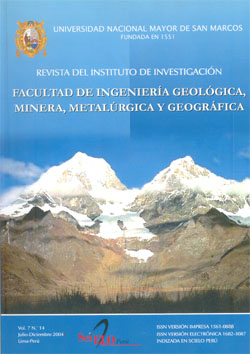Environmental evaluation of the sanitary landfill for the historic sanctuary of Machu Picchu and surrounding towns
DOI:
https://doi.org/10.15381/iigeo.v7i14.732Keywords:
environmental impact, landfill, Cusco, Historic sanctuary of Machu PicchuAbstract
The environmental evaluation of the Sanitary Fill for the historical Sanctuary of Macchu-Picchus Project has been carried out, located in the Quebrada Yuncacha Huayco in front of Yanahuara, province of Maras, Department of Cuzco, 57 km. far from the city of Cuzco. First of all, an environmental diagnostic of the project area is made, identifying all aspects related to the areas flora, fauna, soil, climate and risks facing natural disasters. Moreover, the results of the survey on the populations points of view facing the project are presented. The main impact that such an activity would have will be described as well, considering implementation, operation, closing and post-closing stages. For that aim, a combination matrix is presented, interrelating both environmental categories with the project various activities, and environmental management plans. Finally, mitigation alternatives to environmental impacts generated by the sanitary fill are provided.
Downloads
Published
Issue
Section
License
Copyright (c) 2004 Iris Villafuerte S., Dante Flores O., Enrique Guadalupe G., Manuel Zea A.

This work is licensed under a Creative Commons Attribution-NonCommercial-ShareAlike 4.0 International License.
AUTHORS RETAIN THEIR RIGHTS:
a. Authors retain their trade mark rights and patent, and also on any process or procedure described in the article.
b. Authors retain their right to share, copy, distribute, perform and publicly communicate their article (eg, to place their article in an institutional repository or publish it in a book), with an acknowledgment of its initial publication in the Rev. Inst. investig. Fac. minas metal cienc. geogr.
c. Authors retain theirs right to make a subsequent publication of their work, to use the article or any part thereof (eg a compilation of his papers, lecture notes, thesis, or a book), always indicating the source of publication (the originator of the work, journal, volume, number and date).






